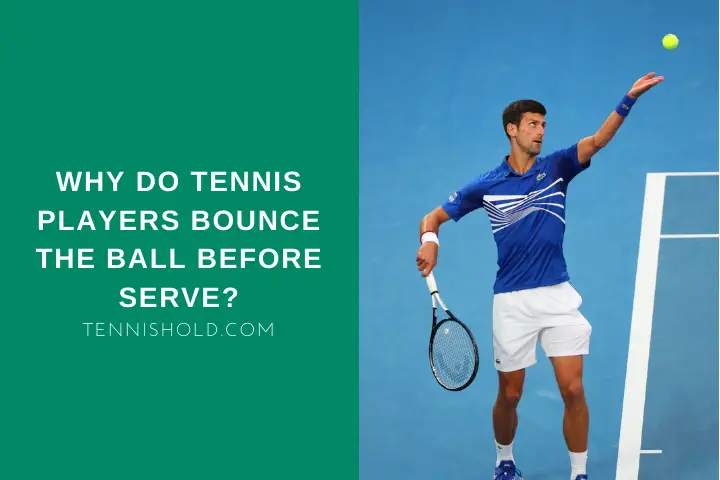It’s something just about every professional tennis player does. They will bounce the ball several times before serving.
Some do it with their racket; most use their hands.
It doesn’t make sense to people who don’t play tennis. But unfortunately, many amateur tennis players don’t understand the concept of bouncing the ball.
Before the player serves, the point is not active. As the point is not live, there surely is no benefit, how can this possibly affect their tennis?
Why don’t they just serve the ball and get straight into the point?
Tennis players bounce the ball before serving to force themselves to take their time before starting play. They often use this time to think about where they will place the ball and tactics for the rest of the point. It also relaxes them before the point.
It is questionable whether it really makes much of a difference. Nonetheless, it has become as traditional as strawberries and cream at Wimbledon.
In this article I will discuss:
- The different serving routines tennis players have
- How players use this time to think about tactics
- If it helps players get into the service rhythm
- How players use these bounces to examine the ball
It Helps Them To Keep The Routine
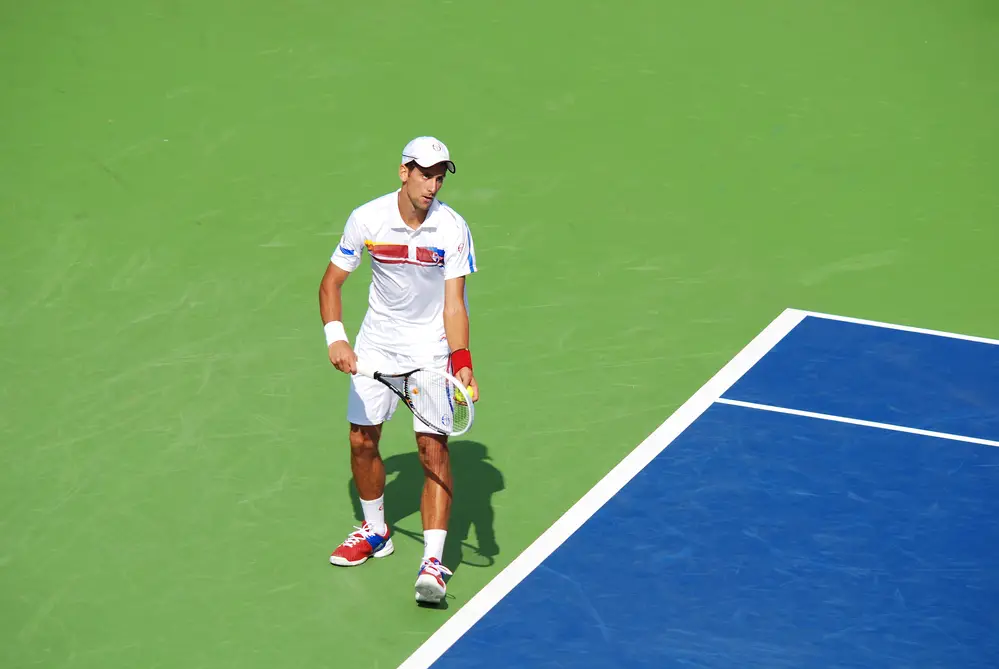
While almost every player bounces the ball before serving, some people have different routines for doing it.
Most players will bounce the ball with their hand and then serve, beginning with the ball to the side of their racket. The left side is for right-handed players.
Canadian Milos Raonic does it a little differently.
Raonic will bounce the ball at a medium pace a few times before serving. Then, when he takes his racket up, he doesn’t have the ball to the side of his racket.
Instead, he tilts his hand with the palm facing up. The ball will then be under the racket as he rises to serve.
Roger Federer is slightly more orthodox with his serving routine. He will bounce the ball down with his racket a few times.
He sometimes even bounces it on the edge of the racket. After this, he will switch to a few quick bounces with his hand before serving.
World number two Daniil Medvedev has a pretty simple routine. First, he will bounce the ball down with his racket two or three times as he approaches the baseline.
As he stands ready to serve, he will bounce the ball another two or three times with his hand.
The most renowned serving routine is, without a doubt Rafael Nadal’s. Nadal is seen as a very superstitious player.
He makes sure that the labels on his water bottles point towards the baseline he is serving from whenever he plays. His superstition extends to serving too.
Nadal will first bounce the ball down with his racket. After he does this, he will do the following:
- Readjust the back of his shorts
- Readjust his t-shirt by the left shoulder
- Readjust his t-shirt by the right shoulder
- Touches his nose
- Strokes the left side of his bandanna
- Touches his nose again
- Strokes the right side of his bandanna
- Touches the front of his shorts on the right side
- Stops bouncing the ball on his racket
- Begins bouncing the ball with his hand and then serve
I don’t know of any other players with a routine quite like Nadal’s.
Player Can Think About Game Tactic
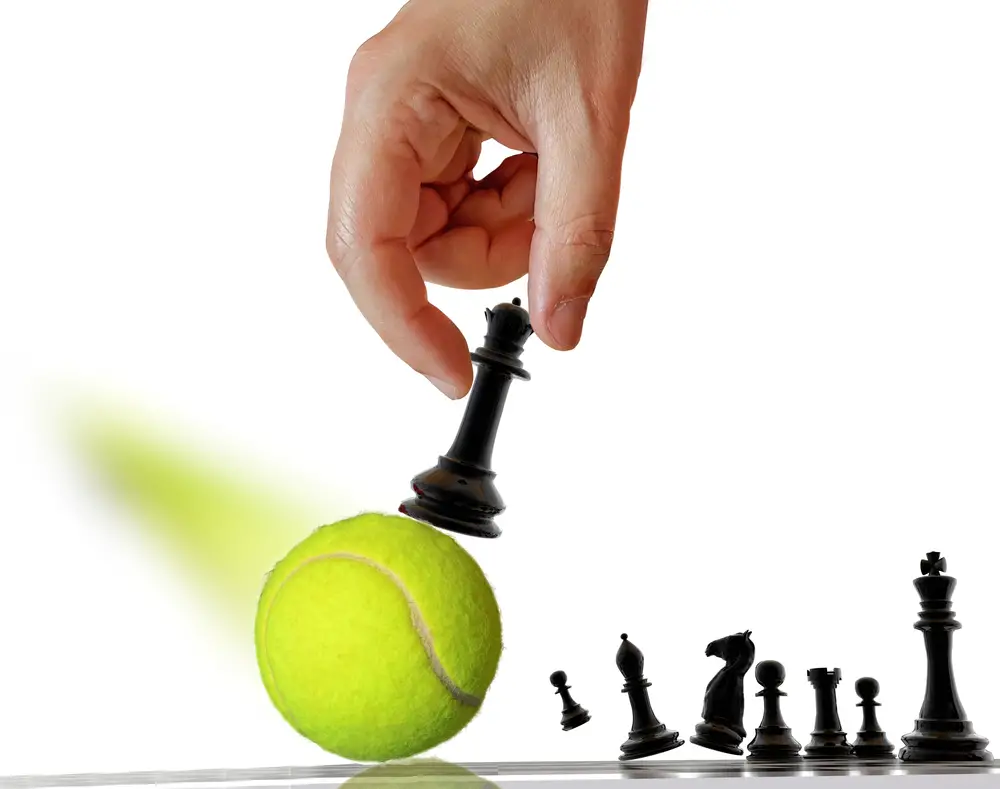
The time players use to bounce the ball offers a great opportunity to think about what they will do in the point.
As they bounce, all their focus is on the ball. It’s almost as though time has frozen. This frozen time can be used to think about where they will serve and what they will do after that.
It’s difficult to have a concrete plan for each individual point.
This is because you never truly know how it will unfold. If your serve doesn’t land where you intended, this can change things. You also have to consider the opponent and their actions.
No matter how perfect your plan may be, you never know what your opponent will do. You can make an educated guess, but nothing is certain.
The time a player uses to bounce the ball can have a backup plan for several scenarios.
If you are serving out wide on the advantage (left) side of the court, you know that the odds of the ball coming back cross-court are higher.
This is because the natural swing path for the opponent is to send it back the way it came. To change direction carries a higher risk.
Looking at the two scenarios here, you have two immediate plans. The first and most likely is that the ball will come back to you. Knowing this can help you think about what comes next.
The second option is that the returner tries to change direction, taking the higher risk option. You can then have a plan B to deal with this scenario.
Also read: Do Tennis Balls Bounce More On Grass?
Get Into The Service Rhythm
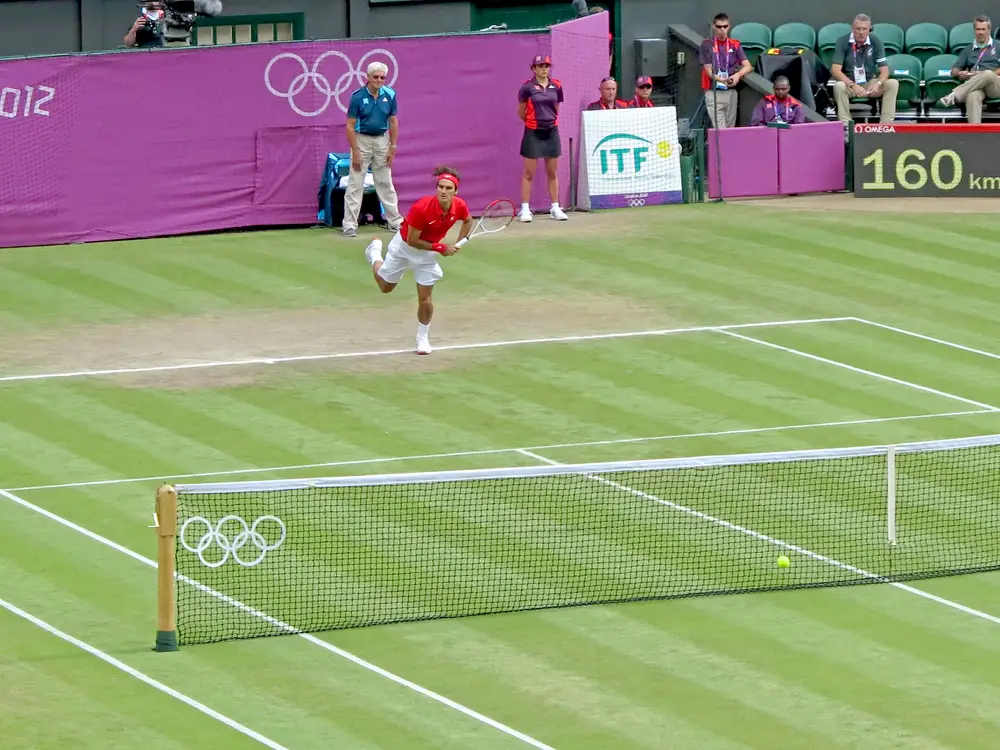
Human beings like familiarity. It brings us comfort as well as security. The serving routine in tennis functions in the same way.
Having a serving routine that remains the same regardless of the score or situation acts as a form of comfort. In addition, it is routine players can use to reset mentally in preparation for the next point.
In the same way, bouncing the ball gives you a chance to focus on tactics. It also allows you to disconnect from the match.
That disconnection, especially after a lost point, could be just what you need to find your rhythm for the next one.
At the 2021 US Open, Andy Murray and Stefanos Tsitsipas came to heads over a prolonged toilet break taken by Tsitsipas.
Following the match, Murray tweeted that it takes Tsitsipas more time to go to the toilet than it takes Jeff Bezos to go to space.
Regardless of your opinion on tactical toilet breaks, they have something in common with the pre-serve routine.
An opportunity to disconnect, rethink tactics and prepare for the next point or stage in the match.
They Examine The Ball
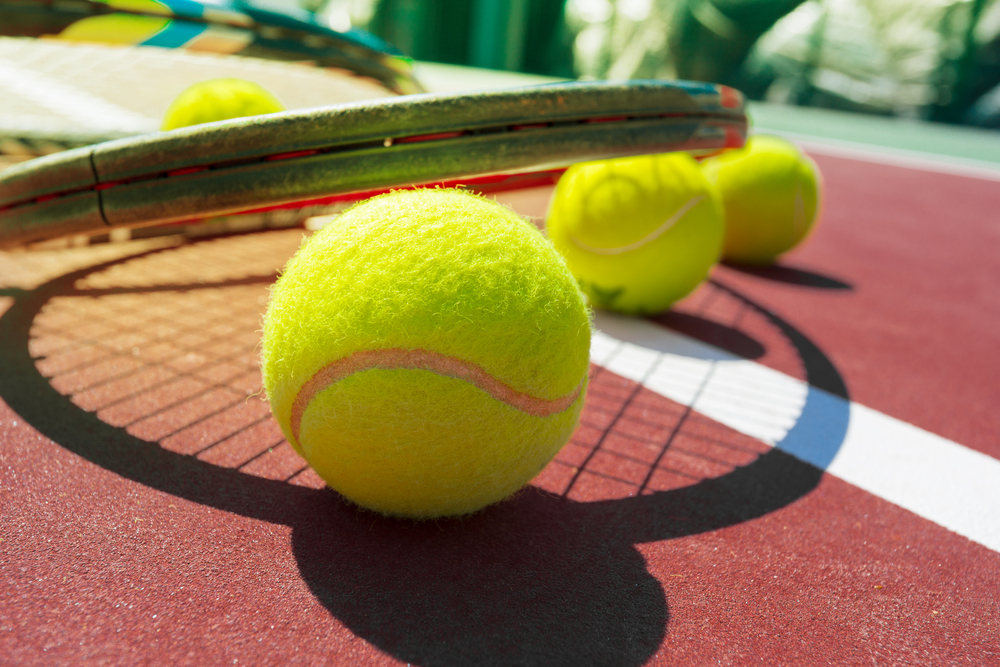
The pre-serve bouncing also allows players to feel how the ball bounces before putting it in play.
All professional matches will regularly change the balls, but some will bounce differently. For example, if one ball has been used more than the other, it will bounce less.
By testing the balls, they can then pick the best ball for them to serve with. Naturally, most will choose to go with the newest ball.
This is because it will bounce higher and faster. As you are the one serving, this is a big advantage.
Most points in tennis are won with less than 4 shots in a rally. This means that the odds of those newer balls being used against you are slimmer.
It means your opponent will need to return the ball and get onto an even footing before the new balls are used against you.
Let’s imagine you’re planning to hit a drop shot underarm serve. If this is the case, you’d want to use the most used ball. This will mean it bounces less.
You can feel which one is best for your tactic by bouncing the balls.
Also read: Why Do Tennis Playes Jump When Serve?
Final Words
Bouncing the ball before serving has no technical benefits for playing. But it clearly helps mentally.
Having those few extra seconds to relax and think about your play could be the difference between winning and losing.
I would feel lost if I didn’t bounce the balls before serving.
What do you think? Does it make much of a difference? Do you have a unique serving routine?
I’m keen to hear about your experiences and what you think.

